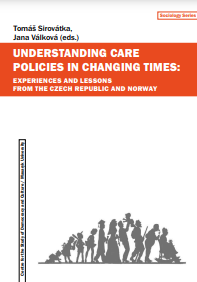Care policies and governance in Norway and the Czech Republic
Care policies and governance in Norway and the Czech Republic
Author(s): Pavel Horák, Markéta Horáková, Marie Louise Seeberg, Jorunn Theresia Jessen
Subject(s): Politics, Welfare systems, Health and medicine and law
Published by: Masarykova univerzita nakladatelství
Keywords: Norway; Czech Republic; care; policy; politics;
Summary/Abstract: This chapter is devoted to the comparison of design and governance of contemporary childcare and eldercare policies in Norway and the Czech Republic, countries that face historically similar (although not equal) structures of in-need populations. In the case of childcare, both countries are similar regarding the parental behaviour of the population, the proportion of preschool children to the total population (3–4 percent), most of whom grow up in two-parent households (52 percent in Norway, 38 percent in the Czech Republic in 2014), and the proportion of children with disabilities or other specific needs (under 10 percent of children living in at-risk-of-poverty households in Norway, and under 15 percent of such children in the Czech Republic) (ČSÚ 2015; Statistics Norway 2015). In case of eldercare, the populations in Norway and in the Czech Republic are ageing like in other European countries (15.9 percent of people are above 65 years in Norway and 17.4 percent in the Czech Republic in 2014) due to the long-term decline in fertility and the increasing life expectancy. This situation is expected to continue in the coming decades (more than 21 percent of the population is expected to be older than 65 in Norway and more than 27 percent in the Czech Republic in the year 2050) (Eurostat 2015).
- Page Range: 55-86
- Page Count: 32
- Publication Year: 2017
- Language: English
- Content File-PDF

